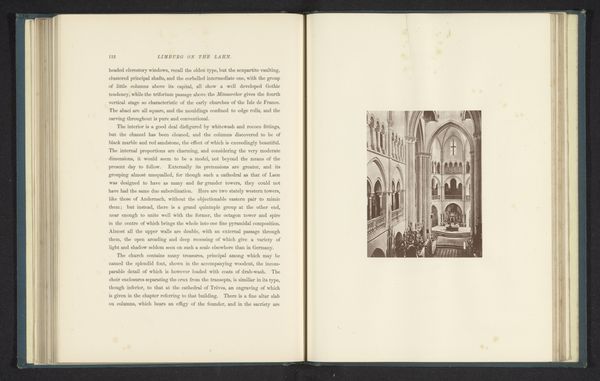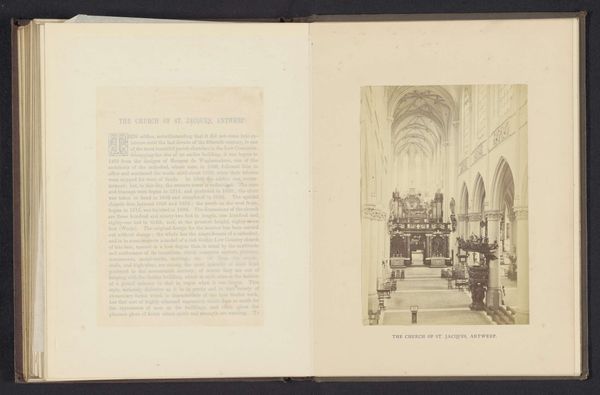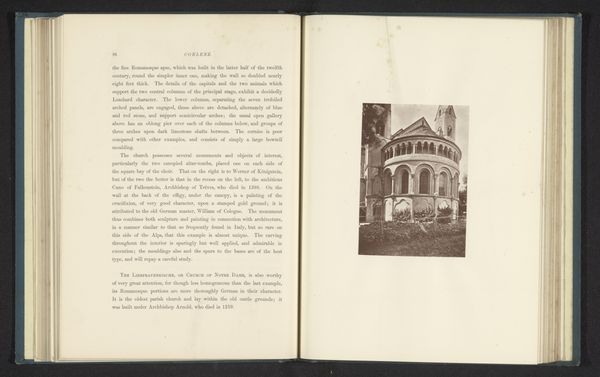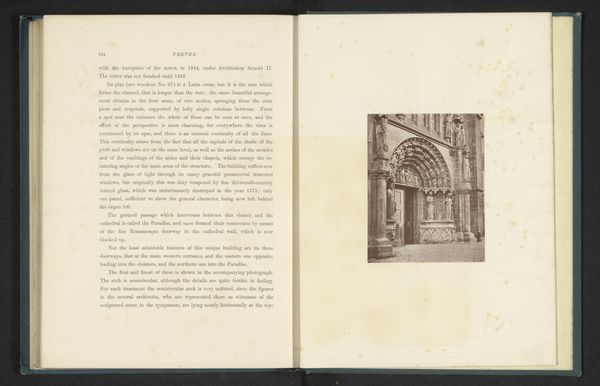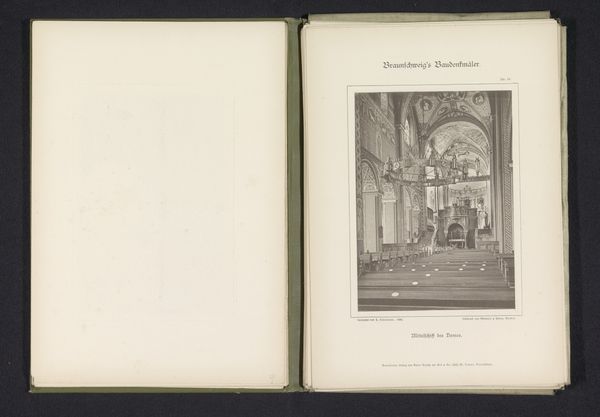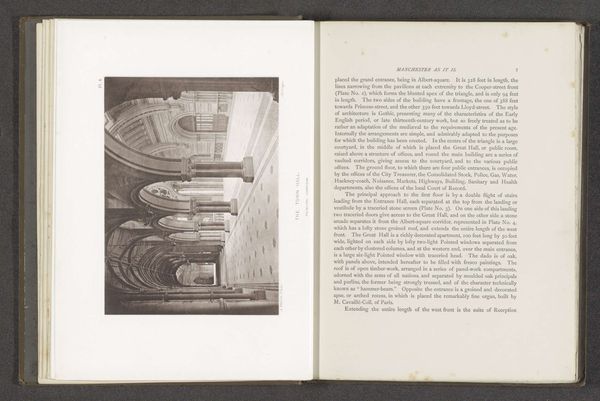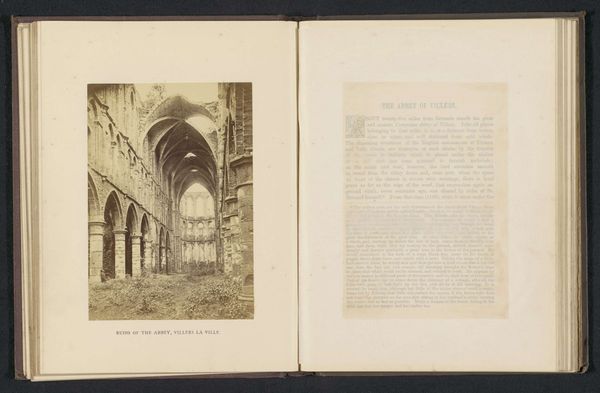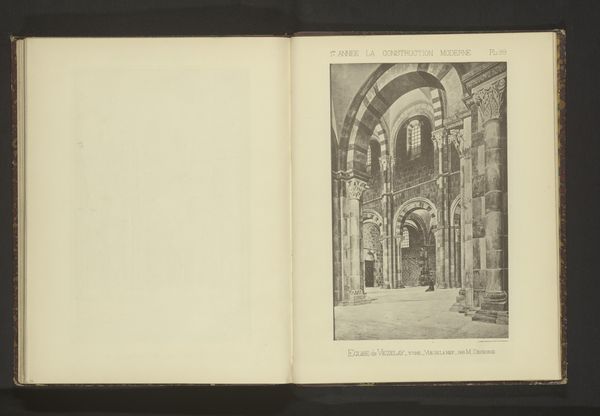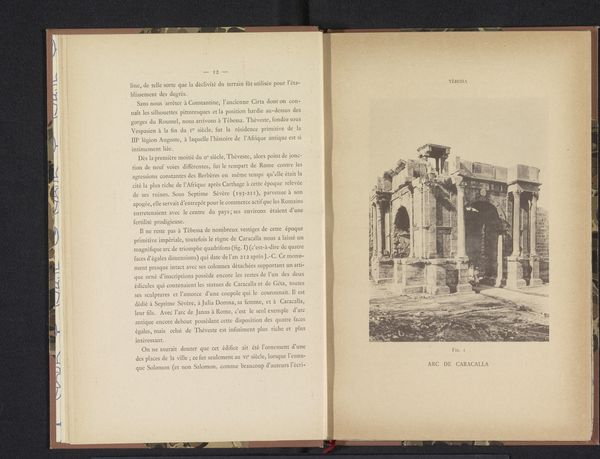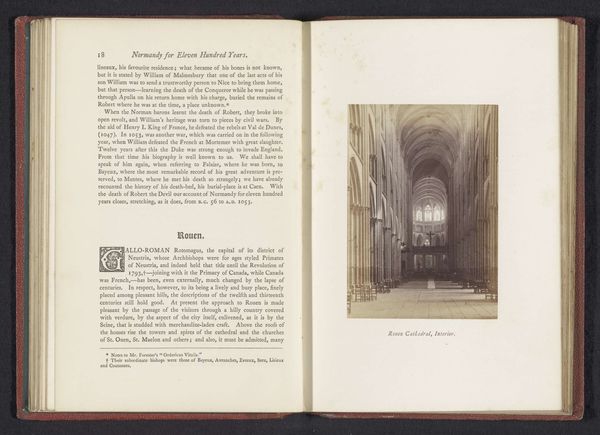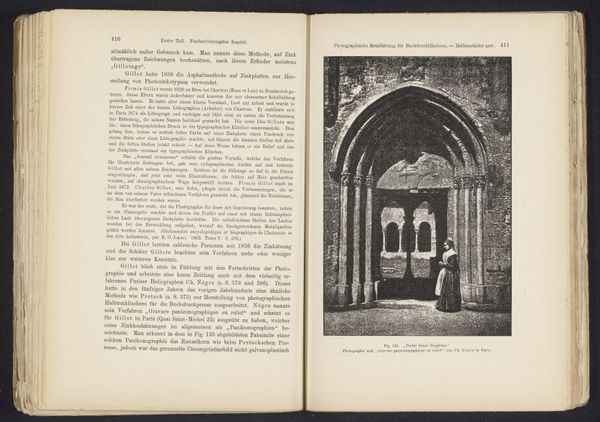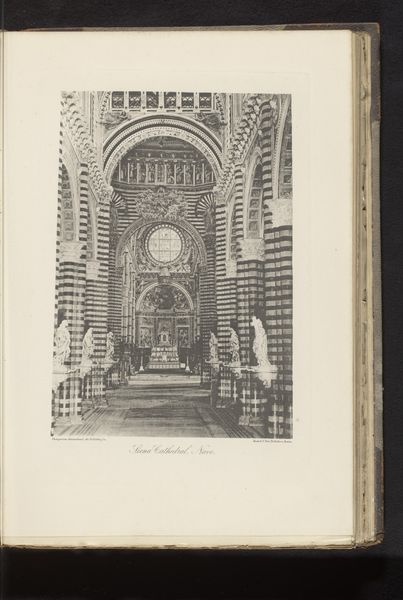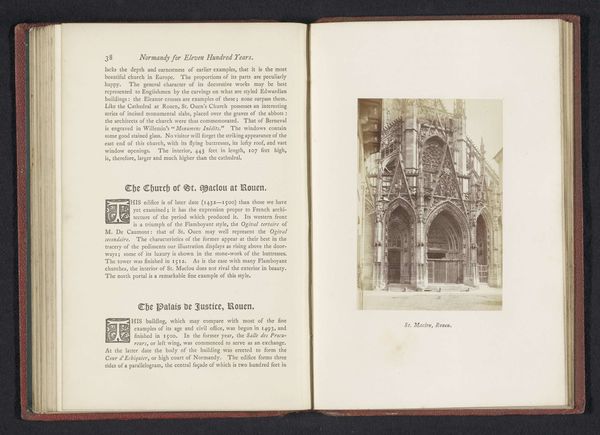
Fotoreproductie van een tekening, voorstellende een interieur van de Saint Stephen Walbrook before 1899
0:00
0:00
drawing, print, etching, architecture
#
drawing
# print
#
etching
#
cityscape
#
architecture
Dimensions: height 173 mm, width 110 mm
Copyright: Rijks Museum: Open Domain
Curator: Here, let’s discuss this photolithograph, "Fotoreproductie van een tekening, voorstellende een interieur van de Saint Stephen Walbrook," dating from before 1899, its source being an anonymous hand. What are your immediate impressions? Editor: My initial feeling is one of serene grandeur. The etching beautifully captures the architectural space, drawing the eye upwards to that magnificent dome. It evokes a strong sense of history and perhaps, a touch of the spiritual. Curator: It's fascinating to consider this image as both a representation of architecture and a product of reproductive technologies. We have the artist’s drawing, then the photographic reproduction, finally rendered as a print. Think of the labor involved in each stage of its creation! Editor: Yes, and I’m immediately struck by the powerful symbolism. Columns stretching toward heaven, a dome suggesting the cosmos... It's a classic visual vocabulary intended to inspire awe and reflection on faith. Note the almost divine light pouring from above. Curator: From a materialist perspective, I see the artist, draftsman, the printer – each contributing their labor and skill to propagate the image. These printing techniques were revolutionary, making architectural drawings accessible to a much wider audience than ever before. Think of the construction industry at the time! Editor: That interplay between architectural drawing and spiritual symbolism reminds us that buildings aren't just structures. They’re imbued with cultural meanings, reflecting the hopes, beliefs, and the social order of the time. The cityscape of London, and how these Churches mark moments of both time and the evolution of social conscience. Curator: Precisely. This image circulated amongst architects, builders, and possibly patrons—fueling design inspiration, and even becoming part of a complex visual economy. Who acquired it, for what uses and how long could this single image prove beneficial in years of use, being handled, folded and brought onsite? Editor: I'm left pondering how such a detailed interior, rendered in monochromatic lines, can still resonate so strongly across the ages. Its powerful symbols seem to transcend their original context. Curator: Yes, through materiality, processes and labor, the image not only documents a space but also tells its story through replication, making it inherently social. Thank you for shedding light on this print's iconography. Editor: Thank you. Considering its imagery has illuminated an evolution of faith, one measured in cultural as much as in material terms.
Comments
No comments
Be the first to comment and join the conversation on the ultimate creative platform.
